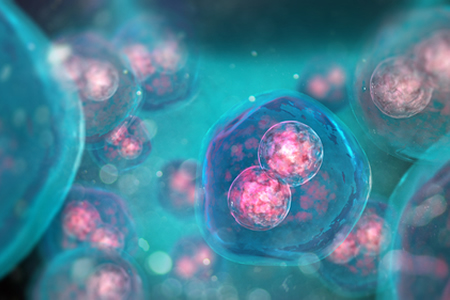Researchers at Northwestern University and Columbia University have created a nanolaser that can be delivered directly into cells. The tiny laser could be incorporated into microprocessor chips and also used in medical imaging systems that could record images of tissues from inside the body. The new laser could also be used to sense biomarkers for certain diseases and potentially also used to treat neurological disorders such as epilepsy.
The nanolaser is between 50 and 150 nanometers thick – about one thousandth of the thickness of a human hair. The nanolaser is inert, so it will not cause harm to living tissues inside the body and since it is mostly constructed out of glass, it will not degrade.
One of the problems with shrinking lasers is they become less efficient, which means much more energy is required to power them. They also need to be excited by shorter ultraviolet wavelengths, which is a problem inside cells as they are susceptible to damage from ultraviolet light. The heat generated by the lasers also has potential to damage tissues.
This nanolaser is different, as it can be excited by longer wavelengths of light and will emit light at shorter wavelengths. “Longer wavelengths of light are needed for bioimaging because they can penetrate farther into tissues than visible wavelength photons,” explained Teri Odom, co-lead researcher and Charles E. and Emma H. Morrison Professor of Chemistry at Northwestern’s Weinberg College of Arts and Sciences. “But shorter wavelengths of light are often desirable at those same deep areas. We have designed an optically clean system that can effectively deliver visible laser light at penetration depths accessible to longer wavelengths.”
The researchers were able to create the laser with these desirable properties using photon upconversion, a process in which low-energy bio-friendly infrared photons are absorbed and converted into a single photon with much higher energy to form a visible laser beam. The laser has low energy demands and is vertically much smaller than the wavelength of light. The power required to operate the laser is far lower than has been achieved in any other lasers to date. These characteristics of the laser mean it has considerable potential for use in next-generation biological imaging systems and a wide range of other applications.
Details of the research can be found in the paper – Ultralow-threshold, continuous-wave upconverting lasing from subwavelength plasmons – which was recently published in the journal Nature Materials. DOI: 10.1038/s41563-019-0482-5
